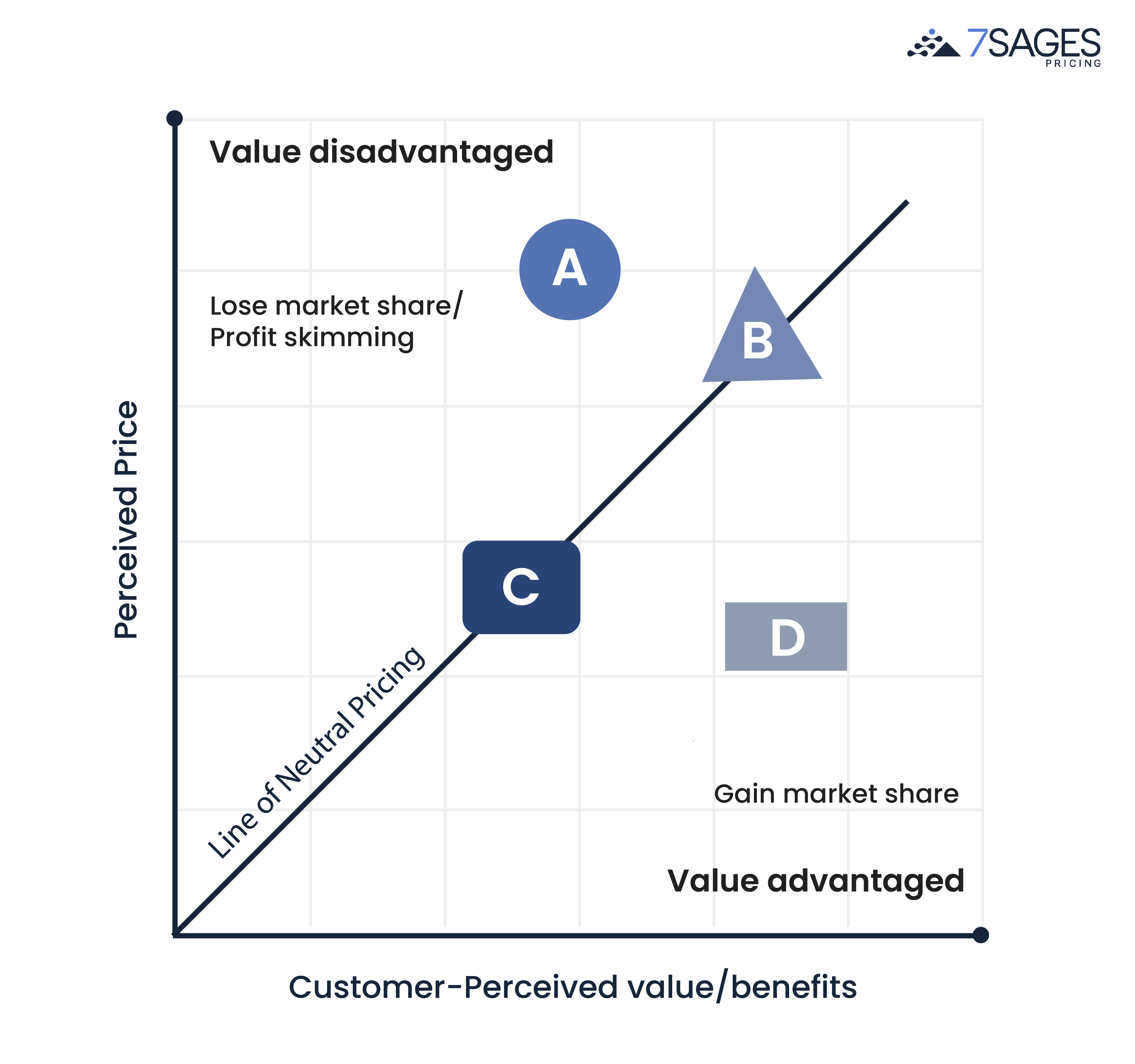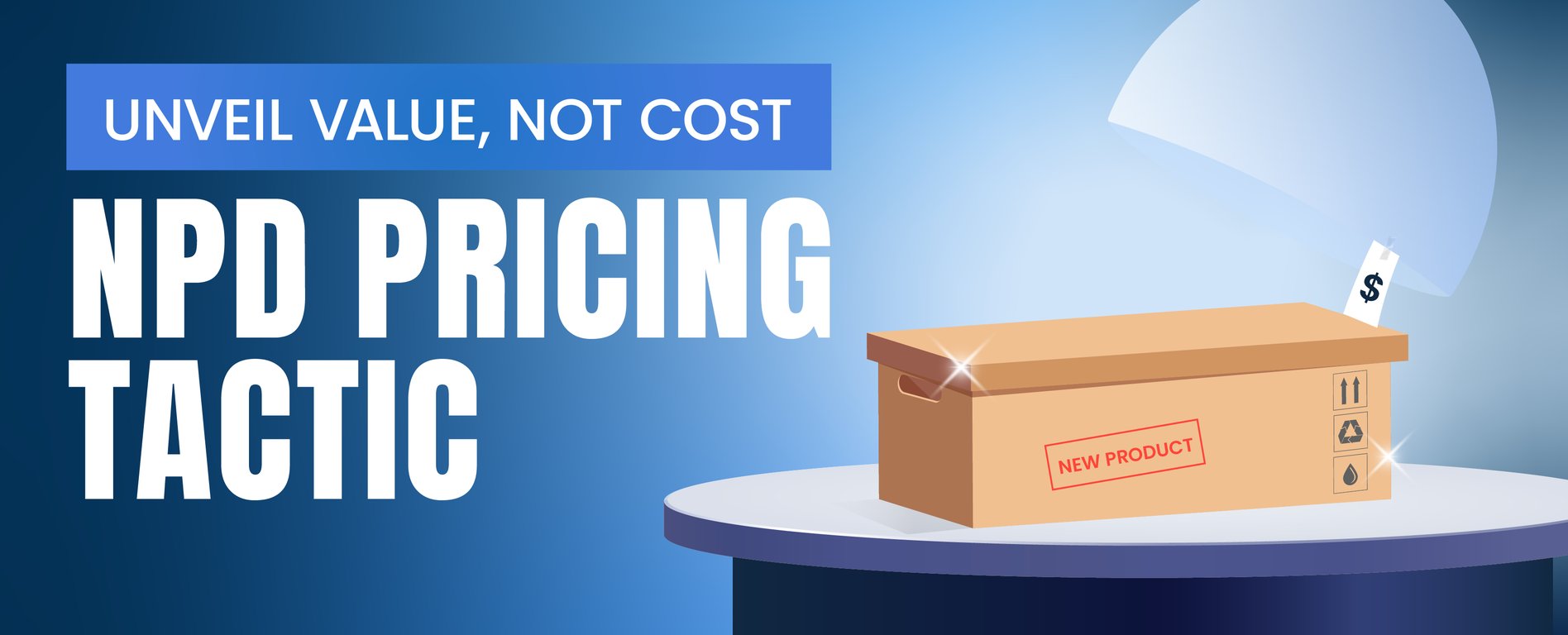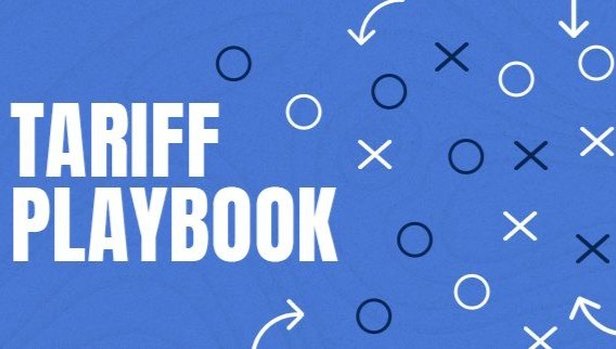Moving from a “Cost-Based, Product-Driven” to a “Value-Based, Customer-Driven” New Product Development Process
One of the two main ways to grow a business is by developing new products and selling them to existing or new customers; the other is by selling existing products to existing or new markets, a concept clearly defined by Igor Ansoff in the 1950s.
Nearly 70 years later, companies are still reinvesting significant portions of their income into developing new products, but are they truly achieving the best financial returns from those investments?
Here, we explore the crucial role that value-based marketing and pricing play in the New Product Development process.

Value Based Pricing: Customer Driven Process
When many companies review their NPD process, they believe they are doing all they can to provide high quality products by using toll/stage gate process to measure effectiveness at each stage. The product must meet guidelines to move to the next stage ensuring all requirements are meet.
Cost Based Pricing

Cost Based Pricing: Product Driven Process
The first process puts a high emphasis the belief that the company knows the industry better than the customers. These companies are developing new products based on internal beliefs of what product enhancements/changes need to be made to meet market needs. This is known as the “Product Driven” process, and revolves around the belief that if you build it the customer will buy it. This process also uses “Cost Based Pricing” as a means to determine what a customer will pay for the product.
One of the ways the NPD team comes up with ideas, is to review issues with current products, which are usually application specific and develop possible whys to fix the issue. A second way they come up with NPD ideas is by using internal knowledge of the industry and determining what the industry needs next.
These two ways of generating ideas develop the first stage in the process “Product”, which is then prototyped to develop an initial cost estimate. The prototype goes through further refinement to develop a final cost structure. There is usually a margin requirement for the new products, so the relevant margin requirements are added to the cost to come up with the price for the new product. The marketing team is then charged with developing value propositions to be used to market the new product to the customers. The “Customer” is the last stage in this process, and many times the company finds out the product does not meet the wants/needs of the marketplace. The other issues companies find is that the customer is not willing to pay the price they are asking for this new product.
This process results in a number of problems-
- Many new products do not meet the expectation of the management teams and resulting in high NPD expenses which are never recovered.
- New products that do not meet the expectation of the customer.
- New products that do not have appropriate pricing to capture the value that is created for the customers.
Value Based Pricing

Value Based Pricing: Customer Driven Process
This second method of developing new products, that puts a much higher emphasis on working with customers to determine the needs of the marketplace and should be seen as the wholly grail for Product Marketers and Pricers. This “Customer Driven” process differs greatly from the “Product Driven” process by starting with the Customer first verses ending with the Customer.
Before anything happens from a technical or development standpoint the NPD team are working with current and potential customers, industry experts, sales team, competitors, and internal resources to understand likes and dislikes about current products in the marketplace, the problems that they have and the theoretical ways of resolving those issue.
These teams also listen to the resources to understand how the products are being used in the marketplace. The NPD teams work with the resources to understand if enhancements to currents products or new products are needed to help the market grow. Additional questions are asked to understand how these enhancements and new products will improve current process to determine the added value. During this discussion process with customers the teams work to build partnerships with the customers NPD teams. By working together to understand the needs of the marketplace, they can help each other grow.
Using the information gathered from the “Customer” stage of the process, the NPD team works with the marketing teams to determines the additional value opportunity and value propositions for each enhancement and new product. This will help in developing a priority schedule for these opportunities. The identified values and willingness to pay will be used in developing the “Value Based Pricing” for these new products. Using the pricing the market is willing to pay for the products, a cost structure is developed and measured against NPD requirements. If the product meets the requirements the prototype process begins. The team works to ensure they are able to include the value added attributes from the customer requirements in the final version of the product.
When the product is released, the customers are aware of how the added value will help them in their business processes. This added value from getting the customers involved in the beginning reduces concerns of the product will meet the needs of the marketplace at the correct price and increases the likelihood of meeting the NPD expectation of the management teams.
Starting with the customer, and thinking about the offering and its specification gives two huge benefits
- A product that is targeted and has a cost to serve that is appropriate for the end customer by avoiding additional features and benefits that are not required
- An offering that is positioned and priced around the value created for the customer which usually means you achieve a higher price.
There are many tools that can assist in defining the values and positioning of new products such as Price Value Mapping and Economic Value Estimator that help Marketers and Pricers identify and quantify the value that an offering or the differentiators in an offering bring.

Price Value Mapping
Developing negotiation guidance and how much of the incremental value delivered in the new product is retained by the manufacturer and how much is shared with the customer is the final and maybe most critical part of this. Having strong process and tools for communicating everything through the sales team is fundamental to the successful launch of a new product.

Economic Value Estimation
Whatever happens inside your NPD process; remember the following things when it comes to identifying the value/differentiation that you put in a product. The customer, the value they are prepared to pay for, how much they are prepared to pay, the cost of that value, and when to start investing in prototyping.
Customer
- Work with customers and potential to understand the needs and wants for products
- Understand how the products are being used in the marketplace
- Discuss if enhancements to products would help the market grow
- Work to understand the added value of new products
Value
- NPD teams work with Product Marketing to determine additional value of the new products
- Determine priority schedule based on value
Price
- Identify willingness to pay for added value from the marketplace
Cost
- Develop a cost structure to work against to measure NPD requirement
Product
- If product meets requirements prototype begins
- Insure to include value attributes from customer in the product
About Author
Steve Wilkins is Managing Director-USA at 7Sages Pricing with 30+ Years of Experience in strategic pricing leadership and management consulting.





